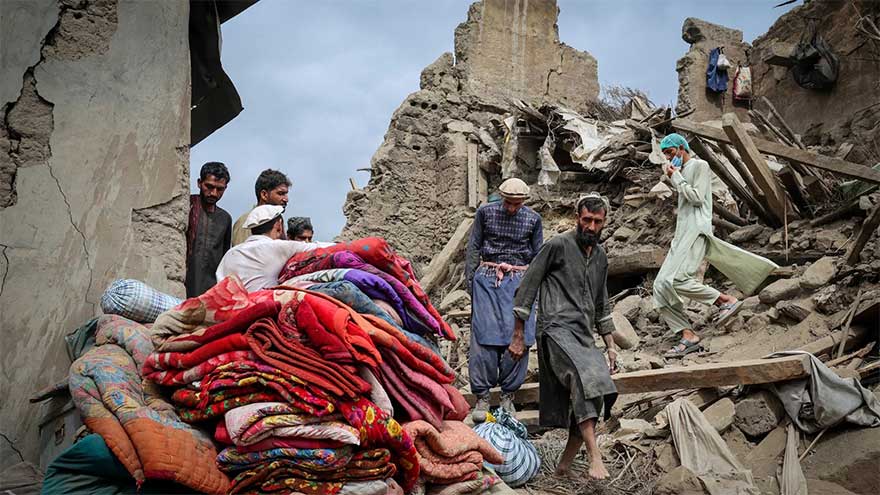By Staff Reporter
A powerful 6.3 magnitude earthquake has struck northern Afghanistan near the city of Mazar-i-Sharif, killing at least seven people and injuring 150 others, according to local officials.
The quake struck at 12:59am on Monday (20:29 GMT) at a depth of 28km (17 miles) near Mazar-i-Sharif, according to the United States Geological Survey (USGS).
Samim Joyanda, the spokesperson for the Ministry of Public Health in Samangan, a mountainous northern province near Mazar-i-Sharif, told the Reuters news agency that “a total of 150 people injured and seven martyred [dead] have been reported and transferred to health centres as of this morning”.
The toll was based on hospital reports collected as of Monday morning, he said.
The USGS issued an orange alert in its PAGER system, which is an automated system that produces information on the impact of earthquakes, and indicated that “significant casualties are likely and the disaster is potentially widespread”.
Past events with this alert level have required a regional or national level response, the system’s alert added.
Afghanistan’s national disaster management agency said that reports on casualties and damage would be shared later.
The earthquake also destroyed part of the holy shrine of Mazar-i-Sharif, Balkh province spokesperson Haji Zaid said, referring to the Blue Mosque.
In Mazar-i-Sharif, a city of about 523,000 people, many residents ran into the street in the middle of the night, fearing their homes might collapse, an AFP correspondent observed.
The quake is the latest natural disaster for the Taliban government, which has faced three major deadly earthquakes since taking over the country in 2021, as the foreign aid that formed the backbone of the country’s economy dramatically dropped.
A shallow 6.0-magnitude quake, the deadliest in recent Afghan history, struck this year on August 31 in the country’s east, killing more than 2,200 people.
Large earthquakes in western Herat, near the Iranian border, in 2023, and in eastern Nangarhar province in 2022 killed hundreds of people and destroyed thousands of homes.
Earthquakes are common in the country, particularly along the Hindu Kush mountain range, near where the Eurasian and Indian tectonic plates meet.
Afghanistan is contending with multiple crises after decades of war: endemic poverty, severe drought and the influx of millions of Afghans forced back home by neighbouring Pakistan and Iran.
Many modest Afghan homes are shoddily built and poor infrastructure hampers rescue efforts after natural disasters like quakes.
Since 1,900, northeastern Afghanistan has been hit by 12 earthquakes with a magnitude above 7.0, according to Brian Baptie, a seismologist with the British Geological Survey.


